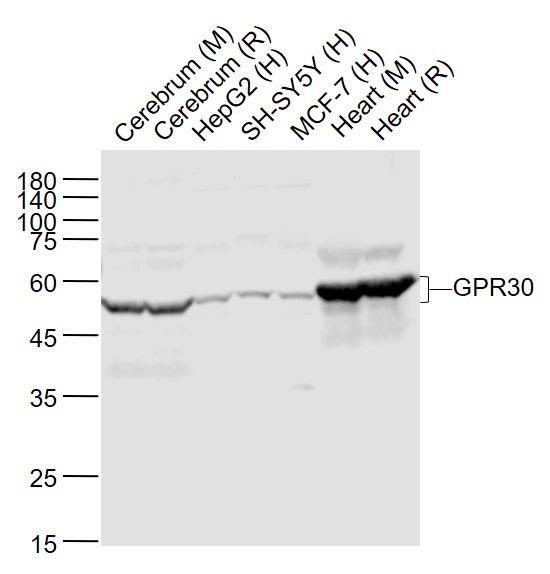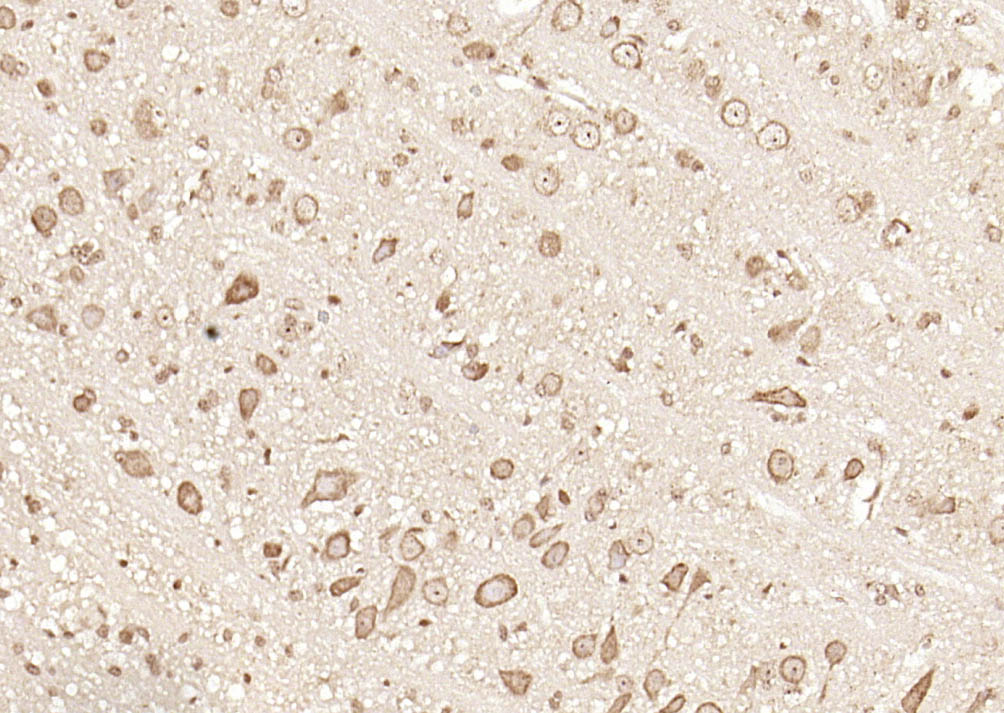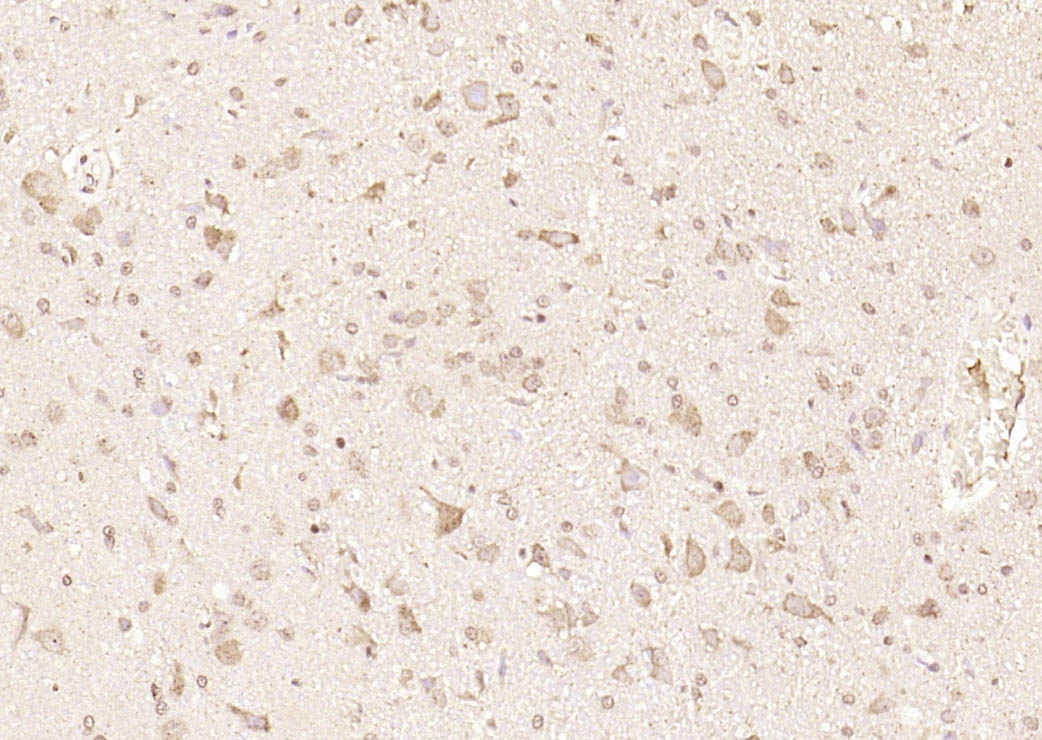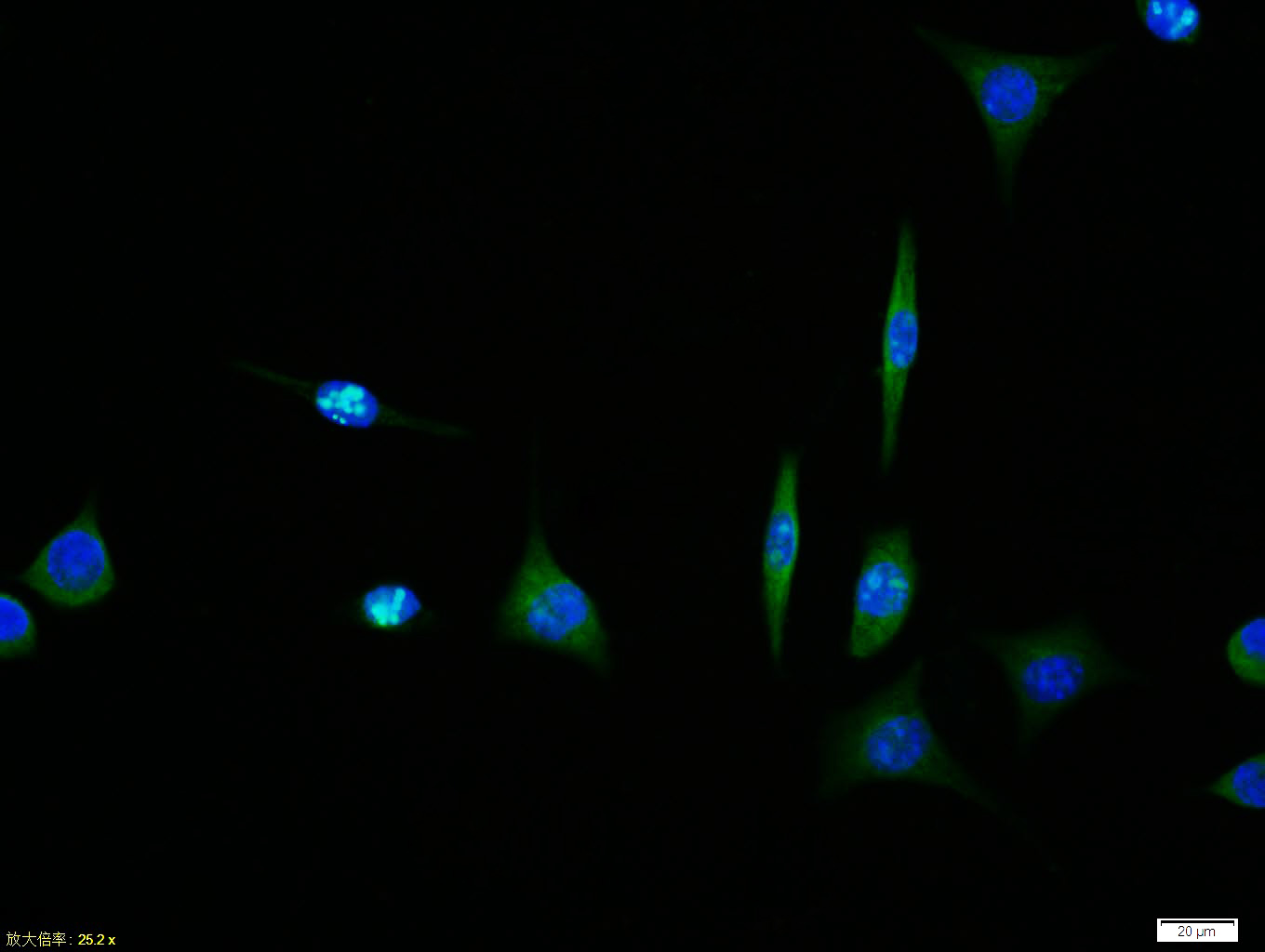sales@bioss.com.cn
techsupport@bioss.com.cn
400-901-9800
Host: Rabbit
Target Protein: GPR30 Rabbit pAb
IR: Immunogen Range:251-350/375
Clonality: Polyclonal
Isotype: IgG
Entrez Gene: 2852
Swiss Prot: Q99527
Source:
KLH conjugated synthetic peptide derived from human GPR30:251-350/375
Purification: affinity purified by Protein A
Storage: 0.01M TBS (pH7.4) with 1% BSA, 0.02% Proclin300 and 50% Glycerol. Shipped at 4℃. Store at -20℃ for one year. Avoid repeated freeze/thaw cycles.
Background: G protein-coupled receptors (GPRs, or GPCRs) contain 7 hydrophobic transmembrane domains embedded in hydrophilic intra- and extracellular loops and transduce a variety of hormone, endogenous peptide, and neurotransmitter signals into intracellular effects via G proteins. GRP30 is a member of this family and is an orphan receptor. GPR30 expression has been reported in brain, breast carcinoma, blood, bone marrow, CNS, heart, liver, lung, lymph node, placenta, and spleen. In brain, GPR30 is expressed as a 2.8 kb transcript in basal forebrain, frontal cortex, thalamus, hippocampus, caudate and putamen. However, unlike other known G protein-coupled receptors, GPR30 localizes to the endoplasmic reticulum, where it specifically binds estrogen and estrogen derivatives.
Size: 200ul
Concentration: 1mg/ml
Applications: WB=1:500-2000,IHC-P=1:100-500,IHC-F=1:100-500,IF=1:100-500,Flow-Cyt=1μg/Test,ICC/IF=1:100
Cross Reactive Species: Human,Mouse,Rat (predicted: Dog)
For research use only. Not intended for diagnostic or therapeutic use.





